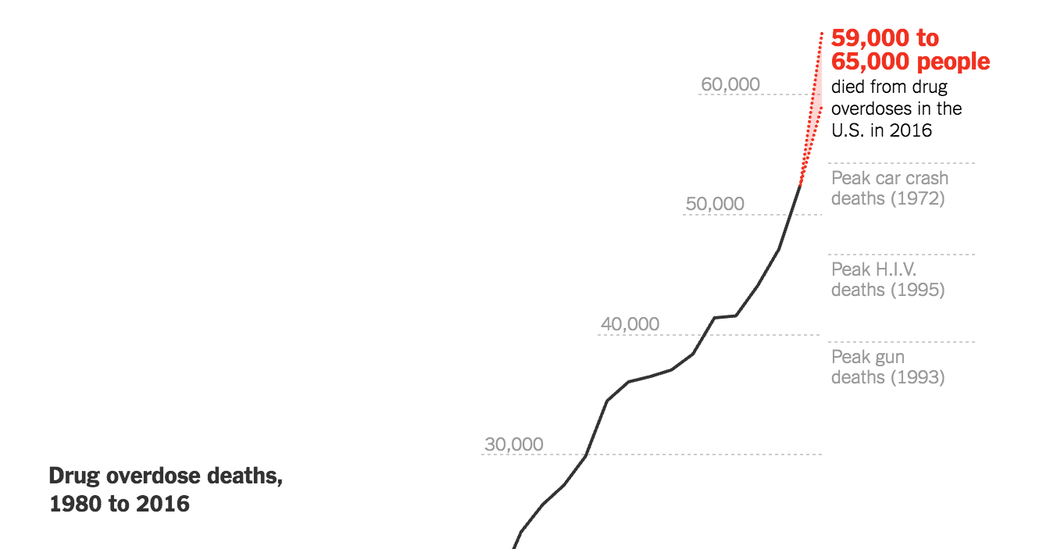Drug overdose deaths in 2016 most likely exceeded 59,000, the largest annual jump ever recorded in the United States, according to preliminary data compiled by The New York Times.
The death count is the latest consequence of an escalating public health crisis: opioid addiction, now made more deadly by an influx of illicitly manufactured fentanyl and similar drugs. Drug overdoses are now the leading cause of death among Americans under 50.
–

